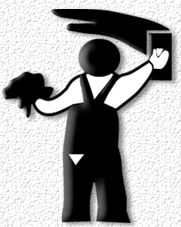
I had always been told to lay my plaster on the bales and then, as soon as it was stiff enough to hold a scratch, run the scarifier over the wall. This produced a scratch or key for the brown coat to hang on. One of the problems with this is that the mud is often uneven in its level of stiffness due to the uneven thickness of the mud over the bales. In addition, this uneven application often created areas where the thicker mud slumped off of the wall a bit and thus were not as tightly anchored in place.
I always went back and worked those areas a bit more before scratching. This extra working can actually weaken the plaster even more as the free lime and the aggregate get separated similarly to what happens when concrete is over worked and the “cream” comes to the surface.
Pressing it back is when the scratch coat is left alone until it reaches a “leathery” condition. This is a bit stiffer than what would be used for the scenario described above. Once at this point, a somewhat flexible trowel is used to press the plaster back upon itself and to push the plaster deeper into the wall. This increases the bond with the substrate and compacts the plaster itself. This compaction strengthens the plaster and reduces cracking by compacting the space between the lime and the aggregate.
Keep in mind that during the drying process, H2O is lost and that space needs to be occupied by something. The lime stretches to fill those spaces as it grows during the carbonation process, with the absorption of CO2. The pressing back pushes all of the material tighter and strengthens the bond as a result. After the wall is pressed back, the scratching is completed. Although the scratching will be shallow, enough key will be created and the strength of the plaster and its bond to the substrate will be greatly increased.



4 Responses
Would you consider putting up a You Tube video demonstrating the “pushing back” process? I have the lime plastering dvd, but it would help to actually see what you mean concerning this additional step.
Hi Lynn. I might be able to do that. I have a lot going on right now and not a whole lot of plastering projects. I will see if I can do it during the plastering workshop May 29-31. It is a fairly simple concept ultimately, but I get how you could use a video to make it totally clear.
Thanks Lynn, the same here Andrew. That will help a lot.
g
Greetings.
as a plasterer from Texas, we call it ironinig it down, for the step you refer to as pressing back the plaster scratch coat. use light trowel pressure this can used side to side or in an upward motion, this is a rather quick and effortless motion. This can also be used on the brown coat but at a much firmer state or dryness, almost like burnishing. I agree that shallow scratching is beter than deep scaring.